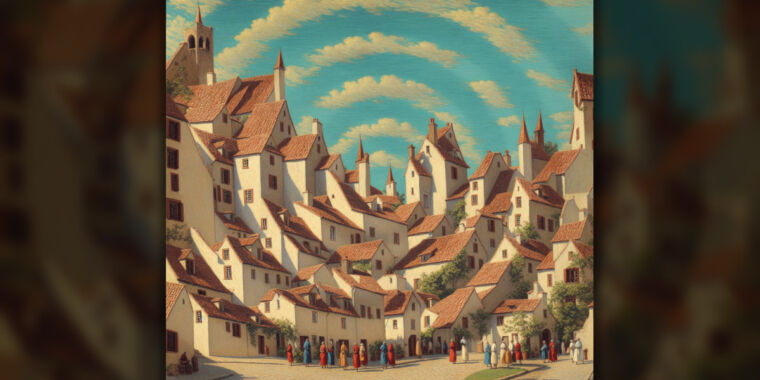- Social media creators are exploring the use of generative artificial intelligence (AI) to enhance their personal brands and streamline their work.
- Giselle Ugarte, a popular TikTok creator with nearly 300,000 followers, is testing AI technology to assist with onboarding new clients.
- Ugarte collaborated with Vermont startup Render Media to create a digital likeness of herself for her business.
- She spent a few hours at Render's New York studio, posing for a camera and reading scripts in different moods to capture her likeness.
- The use of AI technology in this way could potentially save creators time and effort in managing their online presence and engaging with clients.
The main topic is the use of generative AI image models and AI-powered creativity tools.
Key points:
1. The images created using generative AI models are for entertainment and curiosity.
2. The images highlight the biases and stereotypes within AI models and should not be seen as accurate depictions of the human experience.
3. The post promotes AI-powered infinity quizzes and encourages readers to become Community Contributors for BuzzFeed.
### Summary
Artificial intelligence is bringing new possibilities to the world of art, enabling creatives to explore innovative design and aesthetics.
### Facts
- 💡 Artificial intelligence has given rise to a new branch of art.
- 🎨 It allows creatives to experiment with design, aesthetics, and discover new perspectives.
- 👨💼 Jeffrey Yin, CFO of Artsy, and artist Trevor Paglen discuss how AI is expanding the tools available in the art industry.
AI is revolutionizing the art world by providing innovative tools that enhance design, aesthetics, and exploration.
Artificial intelligence, particularly generative AI, is being embraced by the computer graphics and visual effects community at the 50th SIGGRAPH conference, with a focus on responsible and ethical AI, despite concerns about the technology's impact on Hollywood and the creative process.
Artificial intelligence (AI) is seen as a tool that can inspire and collaborate with human creatives in the movie and TV industry, but concerns remain about copyright and ethical issues, according to Greg Harrison, chief creative officer at MOCEAN. Although AI has potential for visual brainstorming and automation of non-creative tasks, it should be used cautiously and in a way that values human creativity and culture.
Stephen King, a renowned author, defends generative AI by comparing it to the Luddites' resistance to industrial progress, despite the fact that the Luddites were actually protesting against the exploitation of workers through machinery, not progress itself. However, many creatives are concerned about AI's impact on their livelihoods, as it eradicates revenue streams and reduces opportunities for emerging artists, making it crucial to critically examine how the technology is being utilized.
Dezeen, an online architecture and design resource, has outlined its policy on the use of artificial intelligence (AI) in text and image generation, stating that while they embrace new technology, they do not publish stories that use AI-generated text unless it is focused on AI and clearly labeled as such, and they favor publishing human-authored illustrations over AI-generated images.
The rise of easily accessible artificial intelligence is leading to an influx of AI-generated goods, including self-help books, wall art, and coloring books, which can be difficult to distinguish from authentic, human-created products, leading to scam products and potential harm to real artists.
Researchers at Stanford University and Google have created a virtual world called Smallville, populated with 25 AI-powered characters known as generative agents, in order to study their behavior and interactions. The agents, powered by AI language models, have memory streams that contain information about their identity and environment, allowing them to engage in dialogue and make plans. The researchers hope that this technology can be used for a variety of applications, including NPCs in video games and simulations for social theories and policies. The AI agents exhibited emergent behaviors such as information diffusion and group coordination.
David Salle, a renowned artist, is using artificial intelligence (A.I.) to create art and challenge conventional thinking about generative A.I. programs, teaching an A.I. algorithm to paint in his style and develop its own artistic intuition.
Users' preconceived ideas and biases about AI can significantly impact their interactions and experiences with AI systems, a new study from MIT Media Lab reveals, suggesting that the more complex the AI, the more reflective it is of human expectations. The study highlights the need for accurate depictions of AI in art and media to shift attitudes and culture surrounding AI, as well as the importance of transparent information about AI systems to help users understand their biases.
Artist Ilya Shkipin used generative AI to assist in creating illustrations for the Dungeons & Dragons lorebook, resulting in controversial images that had strange artifacts and poor quality, leading to the replacement of his work and new policies against using AI in the future.
Digital artist Daniel Ambrosi has created an exhibition that combines AI with eighteenth-century English landscapes, exploring the immersive and cognitive experience of these historic sites.
